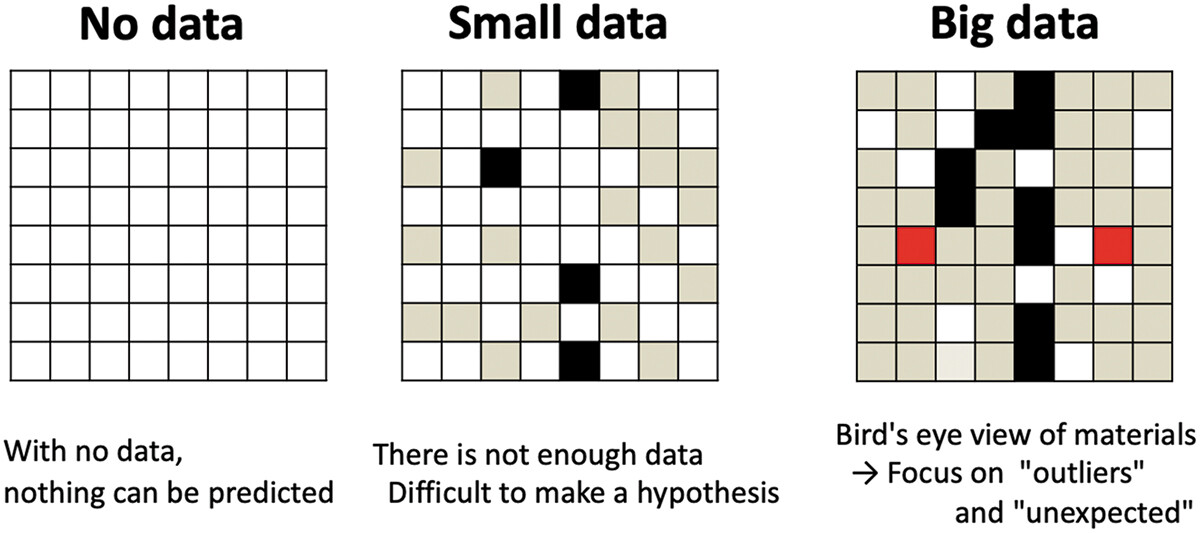File:Fig7 Ishizuki SciTechAdvMatMeth2023 3-1.jpeg

Original file (1,200 × 533 pixels, file size: 96 KB, MIME type: image/jpeg)
Summary
| Description |
Figure 7. Importance of outliers. Suppose there is a number hidden in the tiles in (a). With no data, nothing can be predicted. (b) With some amount of data, hypotheses can be proposed. Typical researchers could not predict that the number "1" is hidden in this figure. Only an exceptional researcher can recognize the hidden "1." Materials science to date has been "local" (i.e., belonging to particular researchers) in this way. (c) When big data is available, researchers can easily recognize "1," without relying on such exceptional researchers. Furthermore, by considering the "outliers" (shown in red), we can see the true situation: a "4" rather than a "1." We can thus construct new theories (i.e., big-picture materials science). |
|---|---|
| Source |
Ishizuki, N.; Shimizu, R.; Hitosugi, T. (2023). "Autonomous experimental systems in materials science". Science and Technology of Advanced Materials: Methods 3 (1): 2197519. doi:10.1080/27660400.2023.2197519. |
| Date |
2023 |
| Author |
Ishizuki, N.; Shimizu, R.; Hitosugi, T. |
| Permission (Reusing this file) |
|
| Other versions |
Licensing
|
|
This work is licensed under the Creative Commons Attribution 4.0 License. |
File history
Click on a date/time to view the file as it appeared at that time.
| Date/Time | Thumbnail | Dimensions | User | Comment | |
|---|---|---|---|---|---|
| current | 18:44, 1 September 2023 |  | 1,200 × 533 (96 KB) | Shawndouglas (talk | contribs) |
You cannot overwrite this file.
File usage
The following page uses this file:









